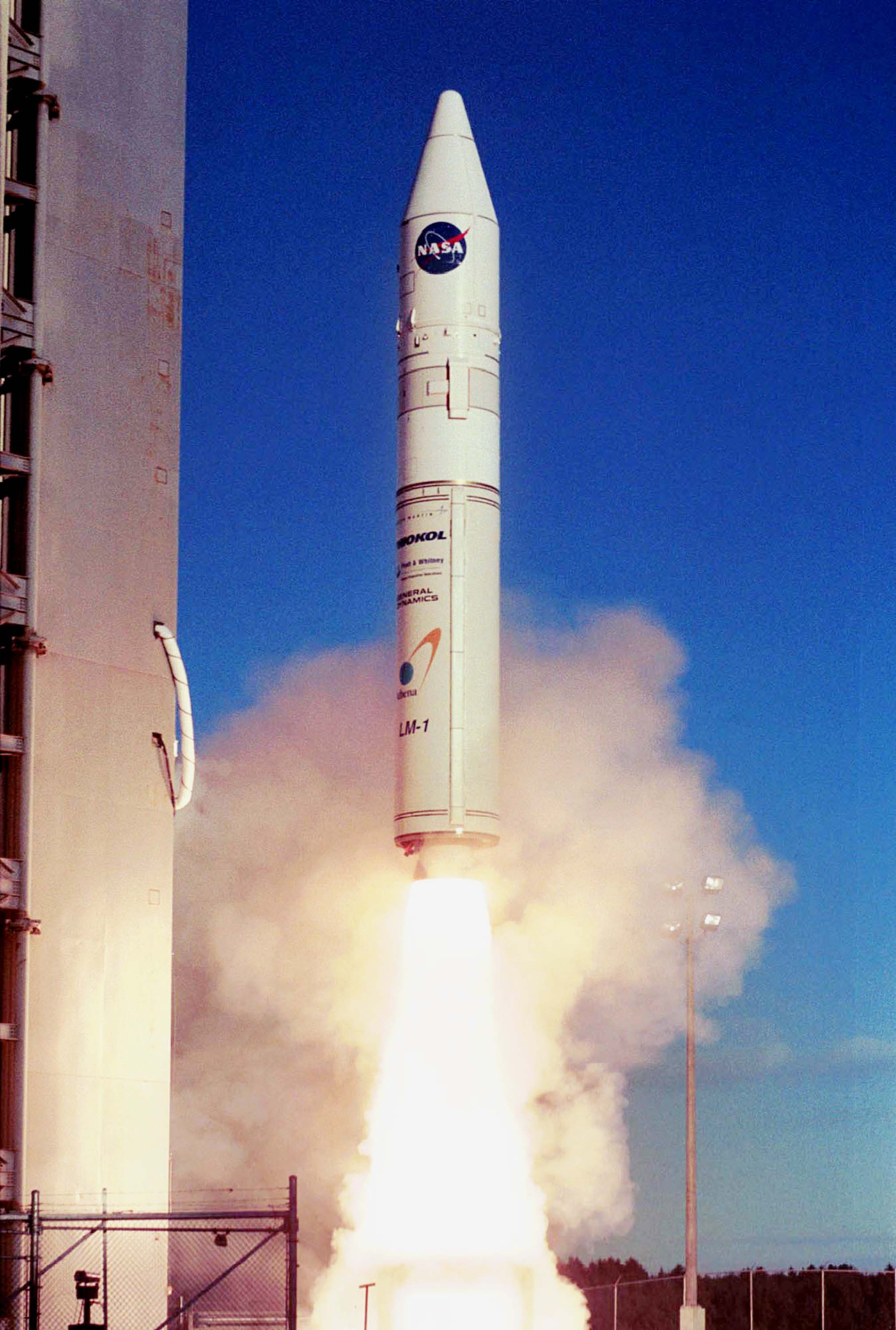
Athena I
In-activeLockheed Martin (LMT)
Aug. 15, 1995
Description
The Athena I, known as the Lockheed Launch Vehicle (LLV) at the time of its first flight and Lockheed Martin Launch Vehicle (LMLV) at the time of its second flight, is an American small expendable launch system which was used for four launches between 1995 and 2001. It is a member of the Athena family of rockets, along with the larger Athena II.
Specifications
-
Stages
3 -
Length
18.9 m -
Diameter
2.36 m -
Fairing Diameter
2.36 m -
Launch Mass
66.0 T -
Thrust
1900.0 kN
Family
-
Name
Athena I -
Family
― -
Variant
I -
Alias
― -
Full Name
Athena I
Payload Capacity
-
Launch Cost
― -
Low Earth Orbit
820.0 kg -
Geostationary Transfer
Orbit
― -
Direct Geostationary
― -
Sun-Synchronous Capacity
360.0 kg
Lockheed Martin
Commercial
None
LMT 1953Lockheed Martin's Space Division started in the production of missiles and later ICBM's in the 1950s. Their TITAN missile system was used for 12 Gemini spacecraft and the Voyager probes. They have worked largely in collaboration with NASA on many of their probes, landers, and spacecraft, and hope to play a key role in NASA's return to the moon in 2024.
Athena I | Starshine-OSCAR-43
Lockheed Martin | United States of AmericaPacific Spaceport Complex, Alaska, USA
Sept. 30, 2001, 2:40 a.m.
Athena I | Formosat-1
Lockheed Martin | United States of AmericaCape Canaveral SFS, FL, USA
Jan. 27, 1999, 12:34 a.m.
Status: Launch Successful
Mission:
The mission objective of ROCSAT-1 (Republic of China Satellite 1) is to develop, launch, and operate a low earth orbit satellite, and to conduct three scientific and technology experiments in the areas of ocean color imaging, space telecommunication, and solar-terrestrial physics.
Low Earth OrbitAthena I | Lewis
Lockheed Martin | United States of AmericaVandenberg SFB, CA, USA
Aug. 23, 1997, 6:51 a.m.
Athena I | Gemstar DSS-1
Lockheed Martin | United States of AmericaVandenberg SFB, CA, USA
Aug. 15, 1995, 10:30 p.m.
Status: Launch Failure
Mission:
The CTA GEMStar 1 (VITASAT 1) satellite partially sponsored by Volunteers In Technical Assistance (VITA) of Arlington Virginia, was launched at 2230 UTC from Vandenberg AFB on the 15-Aug-95, but a second stage failure destroyed the first flight of the Lockheed LLV-1 launch vehicle (later dubbed Athena-1).
Low Earth OrbitElectron
Raise and Shine (RAISE-4)
Rocket Lab Launch Complex 1B - Rocket Lab Launch Complex 1, Mahia Peninsula, New ZealandRAISE-4 (RApid Innovative payload demonstration Satellite-4) is a Japan Aerospace Exploration Agency (JAXA) satellite for on-orbit demonstrations of …
Kuaizhou 11
DEAR-5
Launch Area 95A - Jiuquan Satellite Launch Center, People's Republic of ChinaDEAR-5 is a commercial in-orbit payload and micro-gravity experiments hosting spacecraft developed by Chinese commercial company AZSPACE for various …
Long March 12
SatNet LEO Group 16
Commercial LC-2 - Wenchang Space Launch Site, People's Republic of ChinaA batch of Low Earth Orbit communication satellites for the Chinese state owned SatNet constellation operated by the China Satellite Network Group. …
Falcon 9
Starlink Group 6-90
Space Launch Complex 40 - Cape Canaveral SFS, FL, USAA batch of 29 satellites for the Starlink mega-constellation - SpaceX's project for space-based Internet communication system.
Falcon 9
Starlink Group 15-11
Space Launch Complex 4E - Vandenberg SFB, CA, USAA batch of 27 satellites for the Starlink mega-constellation - SpaceX's project for space-based Internet communication system.

